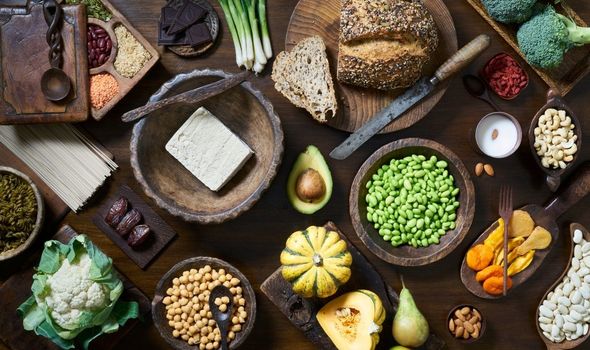
A type 1 diabetic woman decided to switch to a plant-based diet. Initially, she was on a high-fat and low-carbohydrate diet, which led to increased total cholesterol and higher insulin requirements per gram of carbohydrate. After switching to a vegetarian lifestyle, her insulin dosage was reduced, her A1c level was stable, and her cholesterol dropped to 158 mg/dl.
Plan your vegetarian diet to avoid nutrient deficiencies
For diabetes sufferers, a vegetarian diet may be an option. It can control blood sugar and improve insulin response. It may reduce insulin requirements and even prevent type 2 diabetics. Talk to your dietitian about whether a vegetarian diet would be appropriate for your particular condition. She can help with your diet plan and adjust insulin or diabetes medication to ensure that each meal meets the nutritional requirements. She can also help you distribute your carbohydrate intake evenly throughout the day.
You should ensure that you include a wide range of plant-based foods in your vegetarian diet. Look out for foods that have been fortified with vitamins and minerals such as selenium or vitamin B12. Seaweed is good for vitamin B12 or iodine. A variety of protein sources should be included in your diet.

Identify foods to include in your diet
High in fiber, a vegetarian diet can be good for your overall health. Fiber is hard to digest, which means it can affect your blood glucose faster than other foods. To maintain a healthy level, you might need to eat less fiber. You should aim to consume 50 grams of fiber every day. You can include soy products, nuts and vegetables.
Protein is also an important part. It stabilizes blood sugar and reduces sugar cravings. It can be found in both animal and plant sources. Unfortunately, saturated fats are high in animal protein, which is harmful to people with diabetes. Plant-based fats are a good alternative.
Learn about glycemic index and glycemic load
Vegetarians suffering from diabetes should be cautious about what they eat. It is important to understand the glycemic load and glycemic index and how they affect blood sugar levels. These metrics can give you an indication of how fast a food can raise your blood sugar levels. These two metrics don't give you the best information about nutrition. A balanced diet requires that you eat a wide variety of foods.
Whole grains are great sources of fiber, and they have a low glucosemic index. While processed foods are more glycemic, their fiber content still remains relatively low. Although you can still enjoy pasta with whole grain flavors, it is best to reduce your intake. This will allow for better blood sugar control and help prevent Candida overgrowth.

Find a dietitian
A dietitian can help patients with diabetes to understand and manage the disease. They are experts in clinical nutrition and can offer you personalized recommendations. They can help with planning special occasions and meals that you will enjoy, while keeping your diabetes under control. They can answer any questions you may have about portions and how to make healthy meals. By working together with you and your primary care provider, a dietitian can help you reach your goals for good health and a happy life.
Plant-based diets are a great option for diabetics. Not only does it promote optimal cardiovascular health, but it provides essential nutrients and can help people control their blood sugar levels. A dietitian can help guide you in choosing plant-based protein sources, and can also teach you about carbohydrate counts and exchanges to ensure you have the nutrition you need to manage your diabetes.
FAQ
What is the difference in a virus and bacteria?
A virus is a microscopic organism that cannot reproduce outside its host cell. A bacterium, a single-celled organism, reproduces by splitting into two. Viruses measure only 20 nanometers in diameter, but bacteria is up to 1 millimeter in size.
Viruses can be spread by contact with bodily fluids containing infected substances, such as saliva, urine and semen. Bacteria are often spread via direct contact with contaminated surfaces and objects.
Viruses can get into our bodies through cuts and scrapes on the skin, bites or other injuries. They may also enter through the nose, mouth, eyes, ears, vagina, rectum , or anus.
Bacteria can get into our bodies through cuts, scrapes and burns, insect bites, or other skin breaks. They can also get into our bodies via food, water or soil.
Both bacteria and viruses can cause illness. However, viruses cannot reproduce within their hosts. So they only cause illnesses when they infect living cells.
Bacteria can multiply within their hosts and cause illness. They can spread to other parts of our bodies. That's why we need antibiotics to kill them.
What are the 10 best foods to eat?
The 10 best foods to eat include:
-
Avocados
-
Berries
-
Broccoli
-
Cauliflower
-
Eggs
-
Fish
-
Grains
-
Nuts
-
Oats
-
Salmon
Take herbs and other supplements to improve your immunity
Herbs and natural remedies can be used to boost immune function. Examples include ginger, garlic and oregano, echinacea, vitamin C, ginkgo Biloba, and echinacea.
These herbal remedies should not be used in place of conventional medical treatment. These herbal remedies can cause nausea, diarrhea and stomach cramps. They can also cause dizziness, headaches, dizziness, allergic reactions, and stomach pains.
Why should we live a healthy existence?
Living a healthy lifestyle can help you live longer and more happy lives. A healthy lifestyle, regular exercise and good sleep habits will prevent the development of diseases such as stroke, diabetes and heart disease.
By living a healthy lifestyle, we can improve our mental health. It will make us more resilient to everyday stress. A healthy lifestyle will increase self confidence, and it will make us feel younger.
Statistics
- The Dietary Guidelines for Americans recommend keeping added sugar intake below 10% of your daily calorie intake, while the World Health Organization recommends slashing added sugars to 5% or less of your daily calories for optimal health (59Trusted (healthline.com)
- Extra virgin olive oil may benefit heart health, as people who consume it have a lower risk for dying from heart attacks and strokes according to some evidence (57Trusted Source (healthline.com)
- According to the Physical Activity Guidelines for Americans, we should strive for at least 150 minutes of moderate intensity activity each week (54Trusted Source Smoking, harmful use of drugs, and alcohol abuse can all seriously negatively affect your health. (healthline.com)
- nutrients.[17]X Research sourceWhole grains to try include: 100% whole wheat pasta and bread, brown rice, whole grain oats, farro, millet, quinoa, and barley. (wikihow.com)
External Links
How To
What does "vitamin" actually mean?
Vitamins are organic compounds found naturally in food. Vitamins help us absorb nutrients from foods we eat. Vitamins are not made by the body, so they must be obtained through food.
There are two types vitamins: water soluble or fat soluble. Water soluble vitamins dissolve easily in water. Some examples include vitamin C,B1 and B2 vitamins (thiamine), B2 and riboflavin, B3 and niacin, B6 vitamins (pyridoxine), B6 vitamins (niacin), folic acids, biotin, pantothenic acids, and Choline. The liver and fat soluble vitamins are stored in fatty tissue. Examples include vitamin D, E, K, A, and beta carotene.
Vitamins are classified according their biological activity. There are eight main types of vitamins:
-
A - vital for normal growth and maintaining good health.
-
C is important for nerve function and energy production.
-
D - Essential for healthy teeth and bones.
-
E is required for good vision and reproduction.
-
K - essential for healthy nerves, muscles, and joints.
-
P – Vital for building strong bones.
-
Q – aids digestion and absorption.
-
R - Red blood cells are made from red blood cells.
The recommended daily allowance of vitamins (RDA), varies depending upon age, gender, physical condition, and other factors. The U.S. Food and Drug Administration (FDA) sets the RDA values.
For example, the RDA for vitamin A is 400 micrograms per dayfor adults 19 years or older. Pregnant mothers need 600 micrograms a day to ensure fetal growth. Children ages 1-8 require 900 micrograms per day. Children under 1 year old require 700 micrograms daily, while infants over one year old need 500 micrograms every day. This decreases between 9 and 12 months.
Children aged between 1-18 years old who are obese require 800 micrograms per Day, while overweight children need 1000 micrograms every day. Children underweight or obese will require 1200 micrograms a day to meet their nutritional requirements.
Children aged 4-8 years old who have been diagnosed as having anemia require 2200 micrograms of vitamin C per day.
2000 micrograms are required daily for good health in adults over 50. Mothers who are pregnant, nursing, or have a high nutrient need will require 3000 micrograms a day.
1500 micrograms is the recommended daily intake for adults aged 70+, as they lose 10% of their muscle every ten years.
Women who are pregnant, nursing or breastfeeding need more than the RDA. Pregnant mothers need 4000 micrograms per daily during pregnancy and 2500 after giving birth. Breastfeeding moms need 5000 micrograms per daily when breastmilk production occurs.